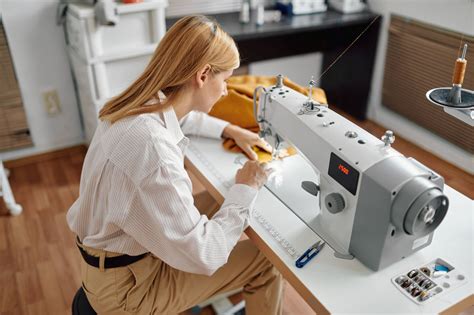How To Use a Sewing Machine: A Beginner's Guide
So you've acquired a sewing machine, congratulations! Whether it's a vintage treasure or a brand-new model, learning to use it can feel daunting. This comprehensive guide will walk you through the basics, turning you from a sewing novice into a confident stitcher.
Getting Started: Familiarize Yourself with Your Machine
Before you even thread the needle, take some time to understand your machine. Every model is slightly different, but most share common features. Consult your sewing machine manual – it's your best friend! Pay close attention to diagrams and explanations of:
- The Power Switch: Seems obvious, but knowing where it is is crucial.
- Foot Pedal: This controls the sewing speed. Practice gentle pressure for better control.
- Stitch Selector: This dial or buttons choose your stitch type (straight stitch, zig-zag, etc.). Experiment to see what your machine can do!
- Stitch Length and Width: These controls adjust the size and spacing of your stitches.
- Tension Dial: This affects how tightly the top and bottom threads are interwoven. We'll delve deeper into tension later.
- Bobbin Winder: This is used to fill the bobbin with thread.
- Needle Plate: This is the metal plate with the needle hole.
- Presser Foot: This holds the fabric down while sewing.
- Feed Dogs: These small teeth under the needle plate move the fabric.
Threading Your Sewing Machine: A Step-by-Step Guide
Threading your machine correctly is vital for smooth sewing. Incorrect threading can lead to broken threads, skipped stitches, and frustration. Here’s a general guide (always refer to your manual for specific instructions):
- Wind the Bobbin: Most machines have a separate bobbin winder. Follow your machine’s instructions to fill the bobbin with thread.
- Insert the Bobbin: Place the filled bobbin into the bobbin case, following your machine’s specific instructions. This often involves inserting it into a compartment under the needle plate.
- Thread the Upper Thread: Guide the thread through the designated path, following the diagram on your machine. This usually involves threading the thread through various guides and tension discs before reaching the needle.
Choosing the Right Needle and Thread
Using the correct needle and thread is crucial for a successful sewing project. The wrong combination can lead to broken needles, damaged fabric, and uneven stitches.
- Needles: Different fabrics require different needles. Use a fine needle for delicate fabrics (silk, chiffon) and a heavier needle for thicker fabrics (denim, canvas). Needle size is usually indicated by a number; higher numbers indicate thicker needles.
- Thread: Choose thread that complements your fabric. Thicker fabrics generally require thicker thread. Polyester thread is a popular and versatile choice.
Setting Up Your First Stitch: Straight Stitch Practice
Once your machine is threaded, let’s start with the basics: the straight stitch. This is the foundation of most sewing projects.
- Select Straight Stitch: Use the stitch selector to choose the straight stitch option.
- Adjust Stitch Length: Start with a medium stitch length.
- Lower the Presser Foot: This holds the fabric in place.
- Practice on Scrap Fabric: Before sewing on your actual project, practice on scrap fabric to get a feel for the machine's speed and tension. This helps you avoid mistakes on your main project.
Mastering Basic Techniques
- Sewing Straight Lines: Use the edge of the needle plate as a guide to sew straight lines. Practice with different stitch lengths to see the effect.
- Turning Corners: To turn corners, stop with the needle down in the fabric, lift the presser foot, pivot the fabric, and lower the presser foot to continue sewing.
- Backstitching: This secures the beginning and end of your seams. Most machines have a reverse stitch function (often a button or lever).
Troubleshooting Common Sewing Machine Problems
- Skipped Stitches: This is often due to incorrect threading, improper tension, or a bent needle.
- Broken Needles: This can be caused by hitting pins or sewing too fast.
- Uneven Stitches: Check your tension and make sure you're using the right needle and thread for your fabric.
Remember, practice makes perfect. Don't get discouraged if you don't master everything immediately. Keep practicing, and you’ll become a confident sewing machine user in no time!
